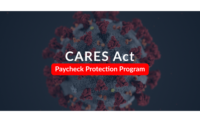There are several factors that determine what type of footwear is appropriate for you. Factors to consider in selection of a shoe includes (1) job activity; (2) equipment handled; (3) potential hazards present in the workplace; and (4) requirements for the position.
What's your type?
There are several types of safety boots made for workers operating under specific conditions:- High-cut: protect feet and ankles from sparks, molten
metals and chemicals;
- Steel toe, reinforced safety toe or reinforced toecap: cushion feet
in case of contact with heavy materials;
- Reinforced metal soles: protect feet against punctures from nails,
screws or scrap metal;
- Steel mid-soles: protect feet against puncture from sharp objects;
- Non-slip soles (rubber or wooden): protects from slipping on wet
surfaces, snow or ice;
- Insulated footwear: protect feet against extremely cold
temperatures;
- Metal-free footwear: worn when working around electricity;
- Treated footwear: protect against chemicals.
The right fit for you. In addition to safety, you want comfort also. When making a selection:
- Walk around to ensure comfort;
- Examine toe room – there should be one-half to one inch from the big
toe to the front of the shoe. Make sure you try the shoe on with your heavy
work socks or arch supports in place;
- When laced completely, the boot should fit snugly around the heel and ankle.
Keep them like new
To get the most out of your safety footwear, immediately after purchase, apply a water-resistant protective coating and regularly check for wear and tear to ensure your feet are always fully protected.Please visit theSafety Resourcessection ofwww.asa.netfor more safety articles andToolbox Talks.

